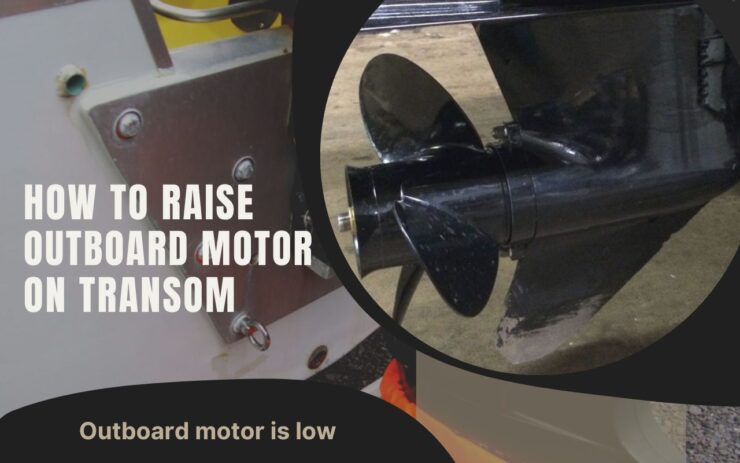It can be very frustrating. When your outboard speed is not as much as they are supposed to be. It can be because the outboard motor is low.
So, how to raise the outboard motor on the transom?
Well, raising the outboard motor can be an easy task for you. All you need to do is measure how much to rise. Then open up the clamp bucket.
Then adjust the motor in a higher hole with a flat head screwdriver. Then finally test your outboard, if the mount is perfect.
You must be still in the blue about that matter. Don’t worry this whole article was made just for you. Let’s jump to the details.
Table of Contents
ToggleDoes Rising Outboard Motor Helps
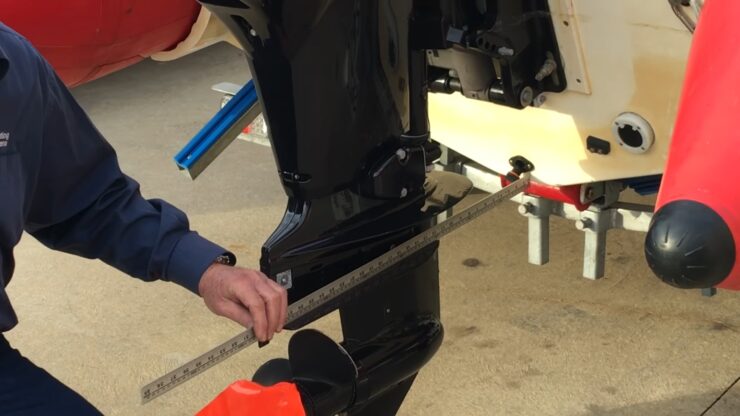
The height of the motor can have a positive influence on performance. The anti-vent plate ought to be steady or 1″-2″ above the keel. Located just above the prop.
You’ll also want to fine-tune the trim/tilt to achieve the best results. Most of the time, it’s just a bit of a learning curve.
Anyone looking to squeeze every last bit of speed out of an outboard-powered boat must pick up a yardstick.
The purpose of this measurement isn’t just to determine raft pace, but to determine the height of the outboard engine on the sailing transom.
Place the yardstick or another suitable flat on the boat’s bottom anywhere along the keel. To draw a straight line from the stern to the outboard. The anti-ventilation grill ought to be nearly parallel to your vertical line.
As a result, the raft’s bottom at the hull is even. Trim the engine so that the prop shaft is parallel to the waterline.
There are multiple adjustments, one for the peak of the motor and one for the cutting tilt of the motor. The lowest trim angle is against the transom and “tucked in,”. Which will help a boat plane as quickly as possible.
Setbacks are also important. If the motor is assembled on a different bracket, it should be raised even more. In general, one inch for every eight to ten inches of setback.
The prop requires anything to peck into in order to create a deep V rise. On a flatter bottom, the prop doesn’t do much lifting. Subwoofer boats and Dinghies are examples of such vessels.
Because the bottom will float on the water’s surface once it begins to move. As a direct consequence, the prop is now able to be raised.
As a consequence, it is reliant. A good, blind starting point is an AV plate that is even with the bottom.
Here’s a description of how you can manually raise the outboard motor. And the tools you’ll need to complete the task.
Tools You Will Need
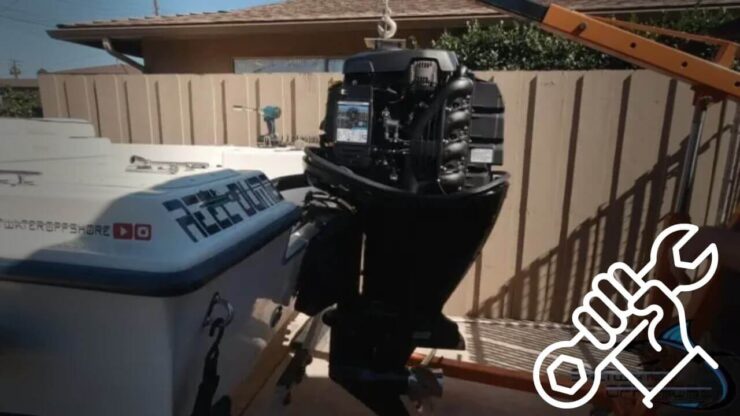
Don’t worry you don’t need to spend a sack of dollars bills to get the job done. You do not even have to purchase any heavy machinery. Here’s what you need.
- Mechanic stethoscope
- Flat Screwdriver
- Yard scale
Here I have specifically described some steps. You can follow to raise the outboard motor on the transom.
4 Steps How to Raise Outboard Motor on Transom
Raising the outboard motor is not difficult as adjusting the linkage of an outboard. All you need to do is take some measurements and grab your flat head screwdriver.
Here’s a stage process guide to what you should do.
1: Measuring How Much to Rising
You need to measure the length of the outboard before mounting the motor height. The motor length is related to the height of the outboard.
Companies provide 4 distinct lengths of motors. S (short, 15 inches). There are also L (lengthy, 20-inch), Extra large (25-inch), and Maxi sizes accessible (30 inches).
Because a longer motor necessitates a longer driveshaft. This is widely termed to as the “shaft length” of the motor.”
However, its length is not the true length of the drive shaft.
In the 1960s, engine and boat builders agreed on these specific motor lengths. To create industry standardization.
The motor length is equal to the boat’s transom height. Which is measured from the keel to the gunwale at the transom.
2: Open Up The Clamp Bucket
The grip lineup is created to allow the engine to be mounted on the back of the boat. It is possible to adjust it higher than the benchmark.
The top of the bracket has four to six holes, and the lesser rivets fit perfectly into slots.
The upper holes are spaced 0.75 inches apart. This adjustment allows the boat builder or operator to perfect the mounting taller.
3: Adjust The Bolt
First, put a block underneath the motor to stable. When the motor screw is loosened the block will help the motor to stay in the same place. Then look for the tilt screw.
The tilt screw would be somewhere around the side of the motor. Then grab your flat head screwdriver. And rotate the tilt screw clockwise it will make the screw loose.
You will need a larger-size flat head screwdriver.
These screwdrivers are top-notch in quality. And they will fit the screw and wouldn’t scratch the screen when rotating.
Then mount your motor in the right hole of the clam bucket. If you mount your motor at a much higher place.
Then the propeller would be above the water. It may reduce the speed of your outboard. But mounting the propeller at the best place will increase your top speed and stability.
Most of the time the mount should be in the next upper hole of the clam bucket. 0.75 inches higher than the standard company height can be the best option for you.
A proper adjustment of your motor height will adjust the idle speed of your outboard.
4: Test your Outboard
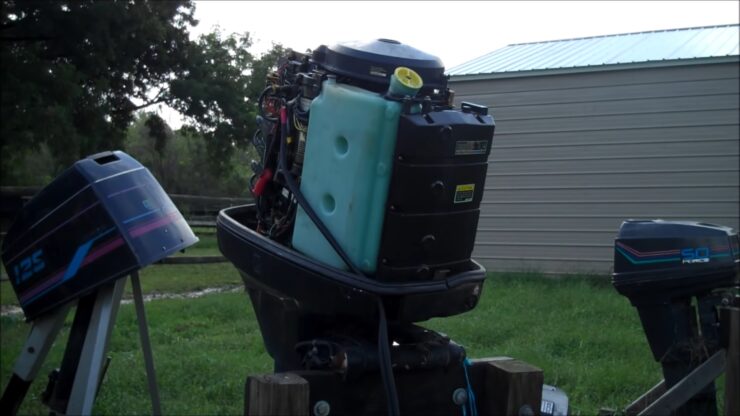
Nothing best would describe whether the motor mounts is right or wrong than a water test. After you have raised your outboard motor, set all the pieces as they were. Then prepare for the test.
Then take your outboard to the water. In the testing time, you have to consider the top speed of your outboard. And also the stability of your outboard in the water.
If you adjust the motor too high, the propeller will be above the water. It will wipe away the relative motion and also it will decrease the maximum speed.
If the results are as expected then you have done a great job. But if you mount your engine a little higher than you might need to redo the whole process.
FAQs
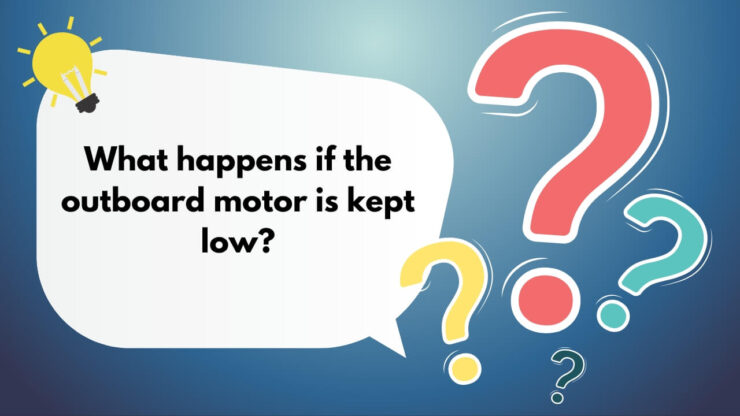
What happens if the outboard motor is kept low?
When the outboard is set too low, it creates too much drag, slowing the boat down and reducing fuel efficiency. If it is too high, the impeller will aerate, losing its nibble on the liquid and blowing out during turns and in rough seas.
How well below the bottom of the boat should the prop be placed?
The boat’s bottom is about 15 to 16 inches in length. I believe 20 to 21 inches is appropriate for a long shaft.
How far below the surface of the water must the microbubble plate be?
The microbubble plate should be close to or mildly underneath the bottom of the vessel. The vertical quantification of the transom for a narrow shaft should be around 15 inches.
What is the purpose of raising an outboard motor on the transom?
Raising the outboard motor on the transom can improve the boat’s speed, handling, and fuel efficiency, as well as reduce drag.
Additionally, it can provide better clearance for shallow water operation and reduce the risk of damage to the lower unit when navigating in rough conditions.
How do I know if my outboard motor needs to be raised?
You may need to raise your outboard motor if you are experiencing reduced performance, difficulty in navigating shallow water, or excessive cavitation.
Consult your boat’s owner’s manual or consult a marine mechanic for recommendations.
What tools do I need to raise my outboard motor on the transom?
To raise an outboard motor on a transom, you will need a transom height gauge, a socket wrench set, and a hydraulic jack or a block and tackle.
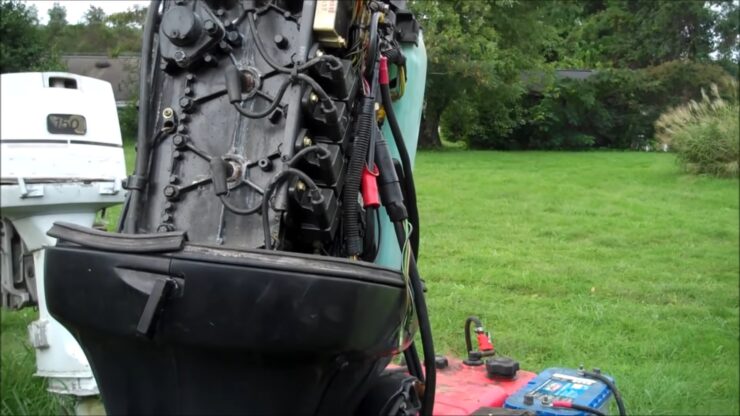
How do I measure the transom height?
The transom height is the distance from the bottom of the transom to the waterline. You can use a transom height gauge or measure it yourself by securing the boat in the water, marking the waterline, and measuring the distance from the mark to the bottom of the transom.
Can I raise the outboard motor on my own or do I need professional assistance?
This can be a complex task that requires technical knowledge and specialized tools. It is recommended to consult a marine mechanic or seek professional assistance if you are unsure of the process or do not have the necessary equipment.
Bottom Line
Thank you for tagging us till the end. Hope now you know how to raise the outboard motor on the transom.
It could be a simple task for you. But still, if you have any hassle contract a professional.
I’m Liam Jackson, the proud owner and driving force behind KayakPaddling.net. Born somewhere in the expansive beauty of the United States, I’ve nurtured a lifelong passion for kayaking and fishing that has led me to explore the far corners of our nation’s waterways.
Related Posts:
- 15 Best Baitcasting Reel Under $100 2024 - Improve…
- 16 Best Kayak For Beginners 2024 - Kayaking Adventure Gear
- 17 Best Trolling Reels 2024 - Enjoy your Fishing Adventure
- 12 Best Kicker Motor Bracket: 2024 - Make the Right Choice
- 12 Best Beach Wagons & Carts 2024 - For All-Terrain
- 10 Best Fishing Kayak Under $1000 2024 -…

